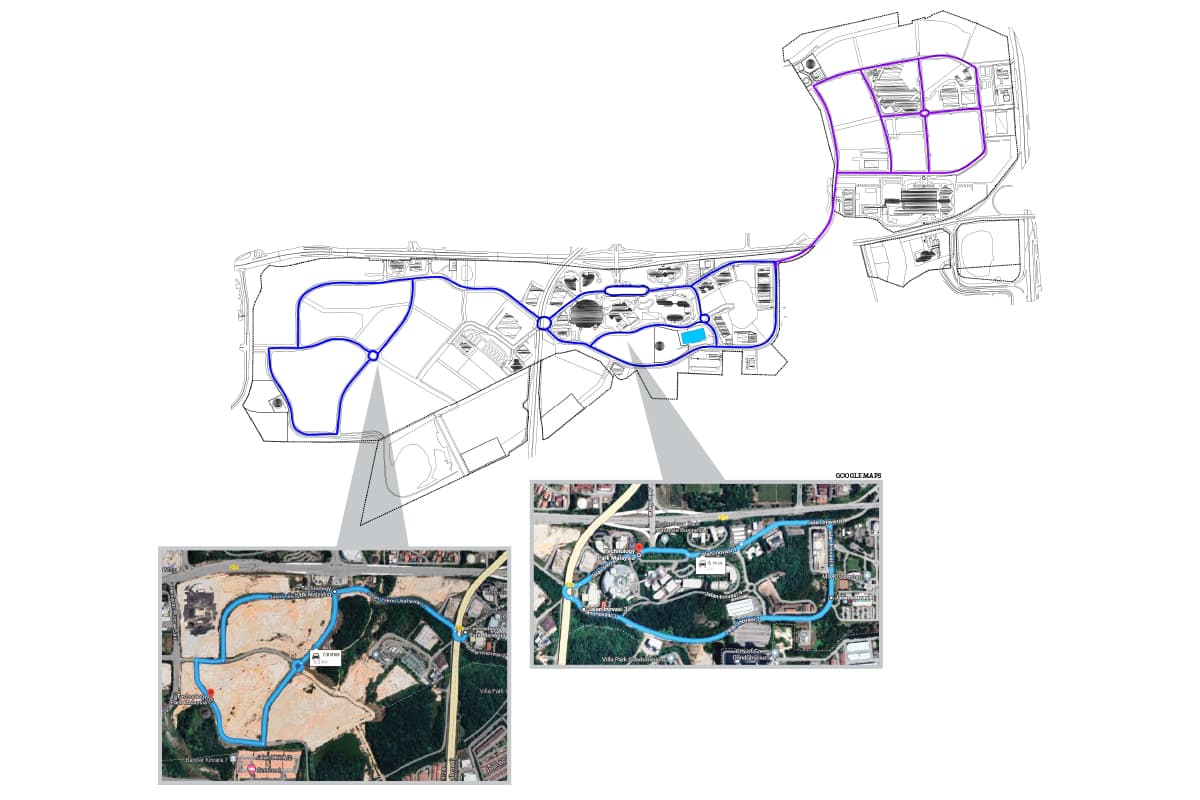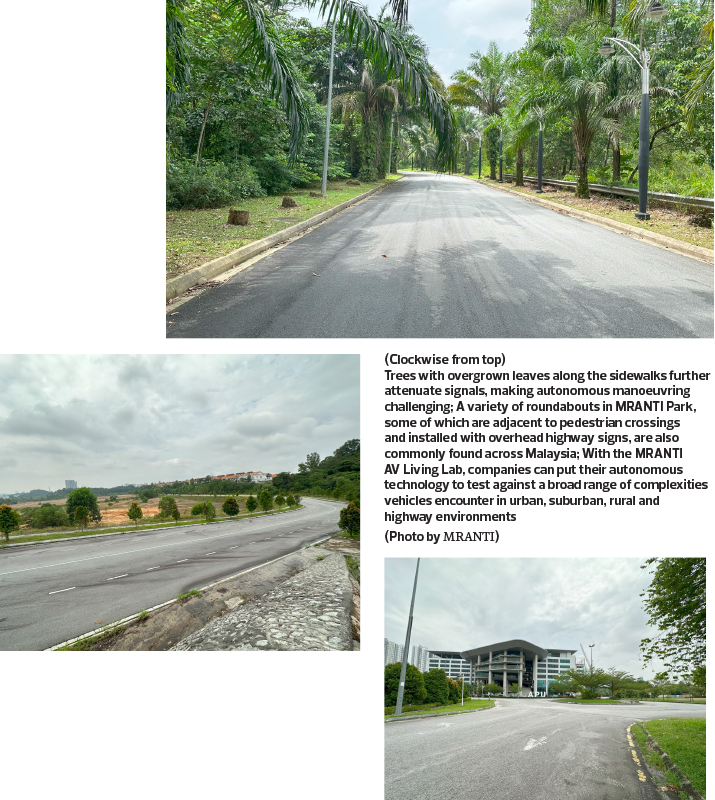
This article first appeared in Digital Edge, The Edge Malaysia Weekly on August 14, 2023 - August 20, 2023
Whenever there is talk about the emergence of self-driving or autonomous vehicles (AVs), it often elicits a range of emotions, combining both excitement and apprehension, as individuals grapple with the idea of surrendering control to artificial intelligence.
On the one hand, the prospect of increased safety, convenience and the potential to transform the way we travel sparks enthusiasm. On the other, concerns about trust in technology, questions surrounding liability and accountability, and uncertainties regarding human-machine interaction create a sense of unease.
But whatever the sentiment around AVs, it’s no secret that developments in the field hold one of the keys to the future. That’s not all empty talk, either — in January 2023, the McKinsey Centre for Future Mobility released a study that claims autonomous driving could create US$300 billion to US$400 billion in revenue by 2035.
As AV technology advances at a rapid pace, Malaysia has taken proactive measures to position itself as a front runner in the AV race. Taking the lead is the Malaysian Research Accelerator for Technology and Innovation (MRANTI), which has introduced the AV Living Lab — the largest testing facility in the country where research on AVs and next-generation vehicles can be safely conducted.
The goal of the AV Living Lab, says Dzuleira Abu Bakar, CEO of MRANTI, is to “provide a human-centred open innovation ecosystem whereby tech start-ups, corporate innovators, researchers and companies can rapidly explore, test, validate and evolve solutions and innovation in AV technology in a controlled setting with real-life communities”.
This facility is specifically designed to serve as a comprehensive living laboratory, incorporating various park areas, cutting-edge facilities and comprehensive programmes — in short, it is a one-stop destination for AV research and development.
The lab is ideal as it has everything possibly needed to conduct advanced research including a test track, a data centre, various test and simulator facilities, and open as well as closed spaces for different test scenarios.
“It’s centred on the principles of co-creation, adaptability and responsiveness — important elements to boost AV development,” says Dzuleira.
Innovation accelerated
One key advantage of the MRANTI AV Living Lab is its enclosed area, housed within a multi-storey car park. This location allows for the evaluation of AVs’ self-parking capabilities, as the facility is equipped with advanced sensors, cameras and other essential instruments. AVs can freely manoeuvre within this controlled environment, both on public roads and within the facility, enabling comprehensive testing scenarios.
Moreover, the AV Living Lab offers a connected outdoor environment that provides an array of real-time testing opportunities. AVs can be assessed under diverse weather conditions, such as rain or sunshine, within gated and controlled areas. This environment facilitates testing scenarios with varying levels of vehicle and pedestrian traffic, mimicking urban and suburban settings.
The expansive 686-acre MRANTI Park features hilly and undulating terrains, as well as narrow roads, allowing for a wide range of testing conditions. To support these activities, the designated AV testing routes can be equipped with charging infrastructure and integrated with intelligent transport systems.
“The two routes marked for AV testing here can be fitted with charging infrastructure and wired for intelligent transport systems to enable data from Internet of Things (IoT) devices in the poles, cars and infrastructure to be transmitted to on-premise or cloud servers on 5G networks for ultrafast processing,” explains Dzuleira.
The MRANTI AV Living Lab boasts a 12km private road for round-the-clock AV testing in a controlled environment. Within these grounds, security, safety and privacy are guaranteed, enabling researchers to recreate diverse real-world scenarios and environments without the need for public spaces. This facility caters to the needs of companies seeking utmost confidentiality. By providing a controlled environment for innovation, the MRANTI AV Living Lab is helping to drive the development of the AV industry.
The space also offers various important facilities to support AV research and development. “Garage spaces” and a 5,000 sq ft MakersLab are available to facilitate the creation of prototypes and encourage solution-driven experimentation. Additionally, the MRANTI 5G Experience Centre serves as a platform for developing proof-of-concept initiatives for AVs. Users can also expect comprehensive programmes and advisory services — workshops, roundtables and skills training programmes — that address technical and public concerns related to privacy, security and other pertinent matters, ensuring the advancement of the AV industry while considering societal implications.
International AV testbed
Many people may not realise it, but Malaysia already has an autonomous public transport system in the form of the Kuala Lumpur Light Rail Transit (LRT).
“It’s an example of AVs in action here, and you can imagine the same thing operating on public roads in the future,” says Dzuleira.
It’s no surprise that Malaysia is slowly emerging as one of the leading contenders to be the region’s AV hub either.
“Malaysia has historically been among the more advanced countries in the (Asean)region and has often been a natural choice, not only for its strategic location but also because of its educated workforce, talent pool, good national infrastructure and general stability,” she shares, adding that the organisation is currently focused on connecting the AV ecosystem by working with a partner to provide micro-credentials or certifications for AV suitability and bringing together key players who can leverage each other’s developments.
“As a community, we will have a reference point and be able to iron out issues such as safety, privacy, security, interoperability and more together.”
The AV Living Lab also enables companies to test their resources in often-unforgiving tropical weather. “Rather than simulate such conditions in a facility in Germany, why not use MRANTI Park’s Living Lab where you can get heavy rain or strong sunshine daily without needing to invest to build anything?”
Sparking profits and a paradigm shift
The lab’s profitability may not currently be measurable since it’s a work in progress, but the existing benefits of AVs could serve as an indicator. AVs powered by emission-free systems will be more sustainable than traditional vehicles.
Socially, AVs provide improved mobility for the elderly, reducing dependency and promoting independence. These vehicles enhance public transport efficiency with programmed schedules, and autonomous shuttles are already operational for shorter distances. AVs also revolutionise logistics, eliminating monotonous drives and reducing human error. Furthermore, they have the potential to save lives during emergencies by transporting individuals to the nearest hospital.
The study by McKinsey estimates that by 2030, at least 12% of new passenger cars will be sold with L3+ autonomous technologies, and 37% will have advanced autonomous driving technologies by 2035. With those numbers in mind, the AV industry certainly presents lucrative, emerging prospects for various stakeholders to leverage and capitalise on.
For example, original equipment manufacturers (OEMs) and suppliers will have a significant opportunity to innovate and develop new technological capabilities to meet the automotive industry’s evolving needs; while tech providers can capitalise on specialised repair services to address any potential software-related issues with AVs. Additionally, insurance premiums for vehicle coverage will vary from traditional products.
“Of course, we cannot make estimations on how big a pie Malaysia will get from that,” Dzuleira stresses, but it certainly will be a “paradigm shift for the automotive and logistics industries and those with high-risk jobs like defence and construction”.
Navigating roadblocks
Embracing AV adoption and Malaysia’s role in it seems to be the inevitable outcome; however, that doesn’t mean the road towards this goal is straightforward.
Key factors that require time to overcome include the maturity of supporting technologies, critical regulatory support, and the readiness of the adoption environment and infrastructure. Control technologies and artificial intelligence in AVs, for instance, still need further development to ensure safe navigation in congested traffic. Even simple measures such as road markings or signs must be standardised, says Dzuleira, as the AV system cannot constantly scan or “read” these in order to move safely around.
There is also the question of high-speed connectivity. While this shouldn’t prove to be a problem in a metropolitan city like Kuala Lumpur, it becomes a point to seriously ponder when you take the country’s more remote zones into consideration.
“There’s work to be done to ensure last-mile 5G connectivity in rural areas before AVs can be rolled out,” Dzuleira points out. “In the future, AVs will be communicating with traffic lights, for example, and if the communication is slow, the vehicle will not stop in time when it is supposed to. There will also be communication between vehicles, and this too requires data transfer at very high speeds.”
In short, Dzuleira stresses that AV adoption is dependent on having a comprehensive infrastructure and ecosystem ready to support it. “We have to recognise that we’re really right at the starting line, though not very far behind other countries, because AV development only started picking up over the past 10 years.”
MRANTI Park was recently announced as the fourth national route for AV testing, with an official launch expected in October 2023, but it doesn’t stop there. “We also have plans to promote this test site in Germany to attract international players to come here. Germany is home to many key automobile players that also have a presence in Malaysia. We hope to strengthen collaboration with these players.”
Save by subscribing to us for your print and/or digital copy.
P/S: The Edge is also available on Apple's App Store and Android's Google Play.

